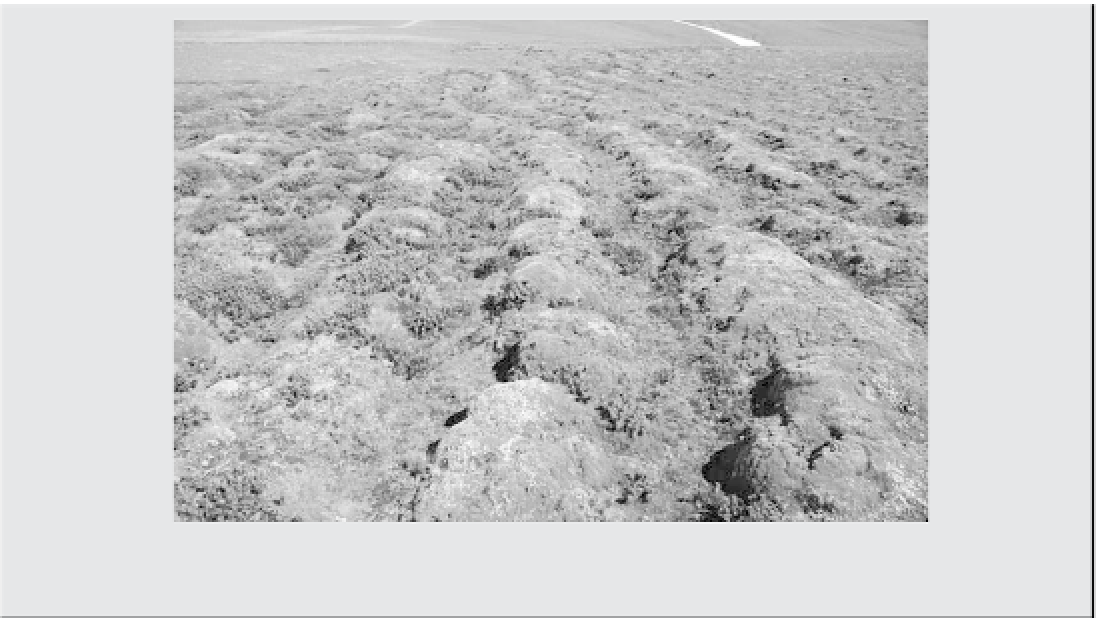Geology Reference
In-Depth Information
Plate 11.5
Non-sorted striped ground (elongate earth hummocks), Rock and Pillar Range, New Zealand.
(
Photograph by Stefan Grab
)
slopes through the surrounding soil, leaving a vegetated
furrow in their wake and building a lobe in their van
(Plate 11.7).
Rock glaciers
are lobes or tongues of frozen, angular
rock and fine debris mixed with interstitial ice and ice
lenses (Plate 11.8). They occur in high mountains of
polar, subpolar, mid-latitude, and low-latitude regions.
Active forms tend to be found in continental and semi-
arid climates, where ice glaciers do not fill all suitable
sites. They range from several hundred metres to more
than a kilometre long and up to 50 m thick.
Slope profiles in periglacial regions seem to come
in five forms (French 1996, 170-80). Type 1, which
is the best-known slope form from periglacial regions,
consists of a steep cliff above a concave debris (talus)
slope, and gentler slope below the talus (Figure 11.6a).
Type 2 are rectilinear debris-mantled slopes, some-
times called
Richter slopes
, in which debris supply
and debris removal are roughly balanced (Figure 11.6b).
They occur in arid and ice-free valleys in parts of
Sorting
processes
Slope
processes
Sorted steps
and stripes
Sorted
circles, nets,
and polygons
Non-
sorted steps
and stripes
Non-sorted
circles, nets, and polygons
Patterning processes
Figure 11.5
Relationships between patterned ground and
sorting processes, slope processes, and patterning processes.
Source:
Adapted from Washburn (1979, 160)


